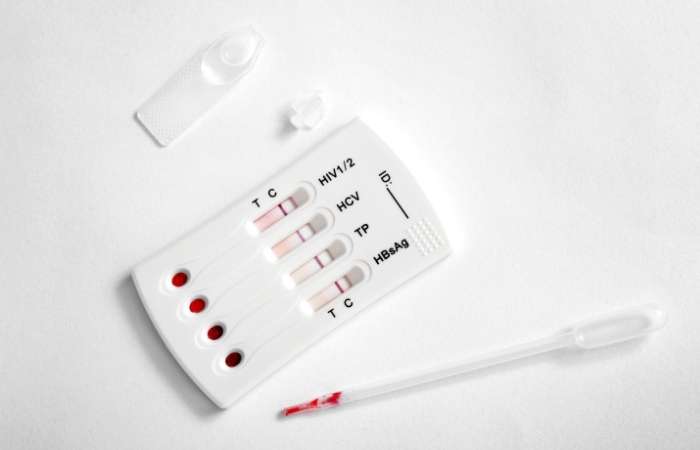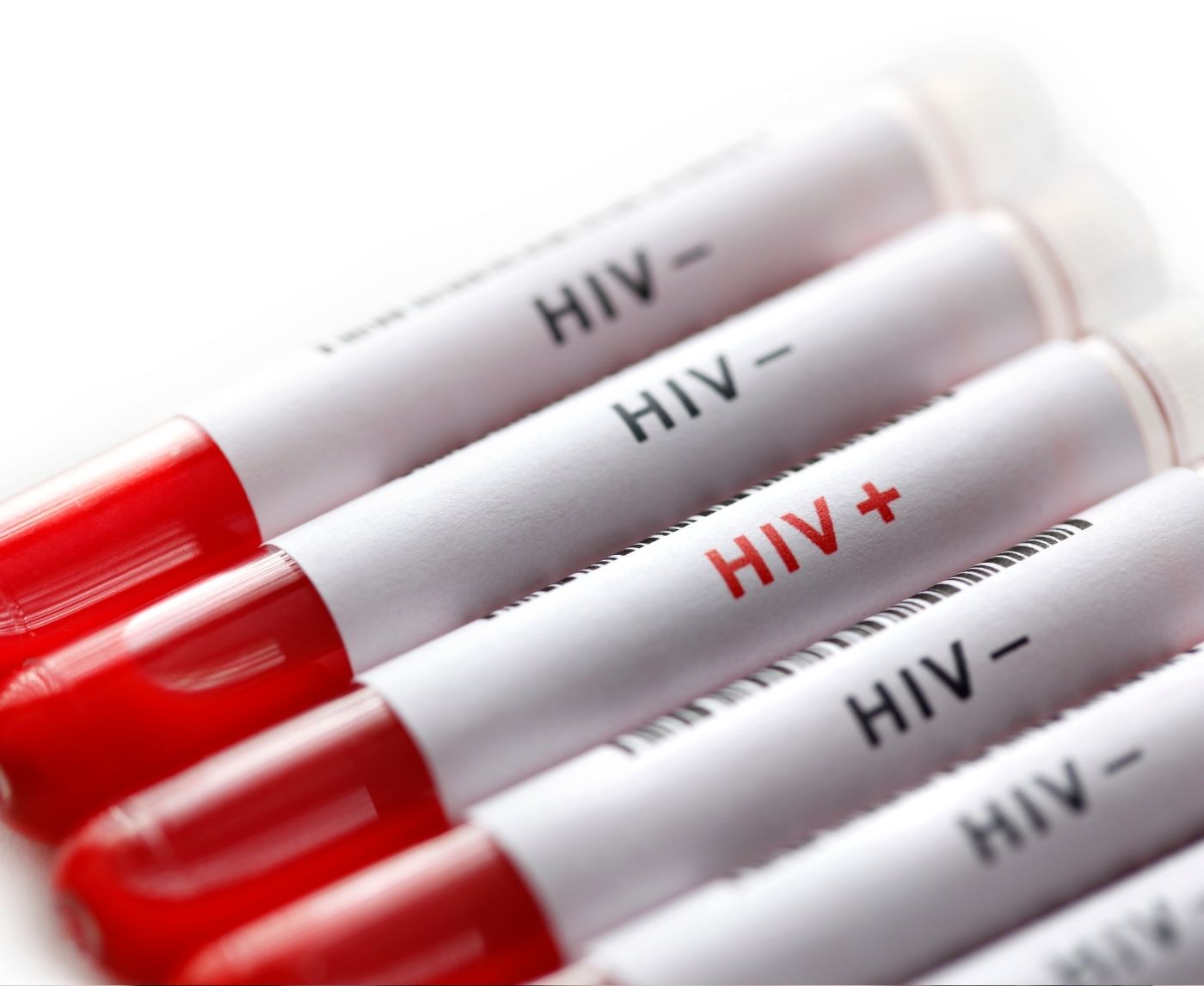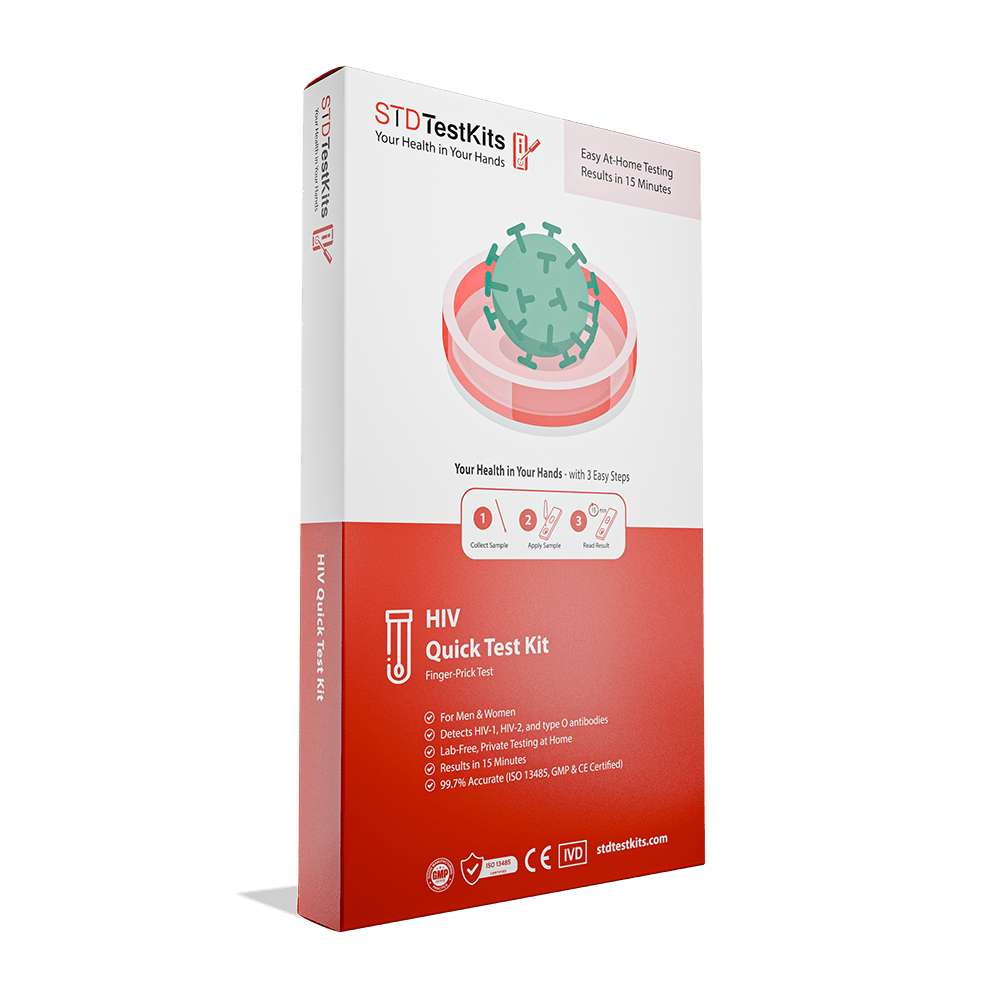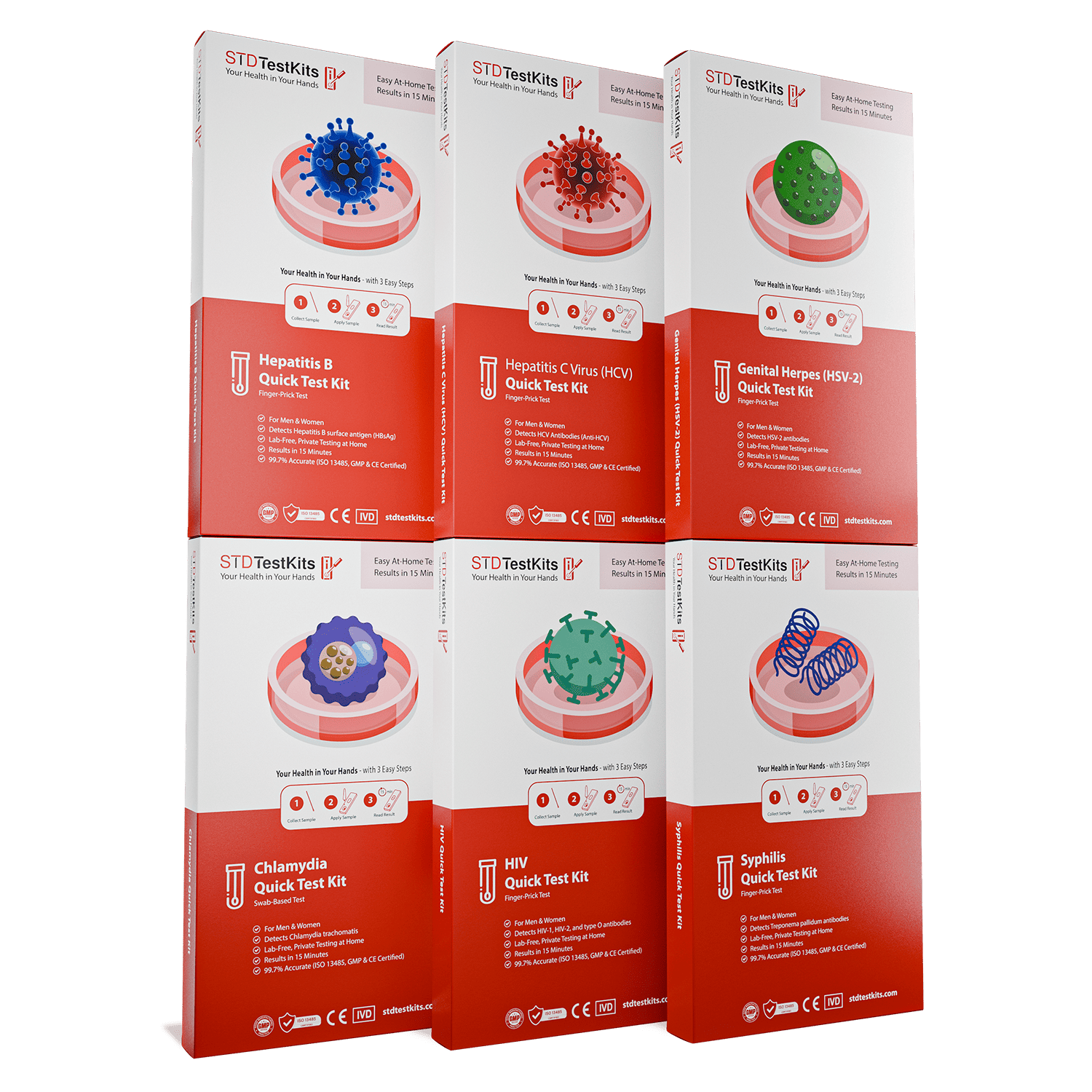When to Test for Syphilis After Exposure (And When Not To)
Quick Answer: HIV progresses in four stages, incubation, acute symptoms, latency, and AIDS, but testing early and starting treatment can stop progression before serious illness begins.
Stage 1: The Silent Start (Incubation Period)
This first phase can feel like nothing at all. No fever. No rash. Nothing out of the ordinary. But behind the scenes, the virus is moving fast. The HIV incubation period, the time from exposure to when the virus can be detected, lasts from 10 days to several weeks, depending on the test you use. During this stage, your immune system hasn’t mounted a visible defense yet, which means many standard antibody tests will still show negative.
That’s why timing matters so much. If you test too early, especially with a basic at-home test or a fingerstick rapid test, you could get a false negative. But the virus may already be in your bloodstream. According to the CDC, fourth-generation tests (which look for both antibodies and viral antigens) can detect HIV as early as 18–45 days after exposure. NAAT tests can detect it even sooner, often within 10–33 days.
Think of this as the “invisible” phase. You won’t feel different, but that doesn’t mean you’re in the clear. If you’ve had a possible exposure, unprotected sex, shared needles, or even a condom that slipped, testing now and again later is crucial. Early detection can literally stop HIV before it does long-term damage.

People are also reading: She Didn’t Know She Had Chlamydia, Until It Was Too Late
Stage 2: When the Body Fights Back (Acute HIV Symptoms)
For many people, the first real signs of HIV come 2–4 weeks after exposure, and they often mimic the flu. You might not realize it’s HIV at all. Fever, sore throat, swollen lymph nodes, fatigue, and rash are common. Some experience mouth ulcers or even temporary weight loss. Doctors refer to this as acute retroviral syndrome (ARS), and it’s the body’s first attempt to fight the virus.
Marcus, 27, remembers it clearly: “I thought it was a really bad cold. I had a fever, I couldn’t eat, I had these red spots on my chest. I never thought HIV. I almost didn’t test because it felt like overkill.” He tested on day 26, positive.
This early immune response can trigger high viral loads, meaning you're most contagious during this stage, even if you don’t feel that sick. And here's the tricky part: not everyone gets symptoms. Up to 60% of people might go through this stage with barely a sniffle or a cough.
Some dermatological symptoms, like herpes zoster flares or seborrheic dermatitis, can also emerge, according to WHO clinical staging guidelines. These aren’t random; they signal that your immune system is starting to struggle.
Stage 3: The Long Quiet (Clinical Latency Stage)
After the acute symptoms fade, or if they never showed up at all, HIV enters what’s known as the clinical latency phase. It sounds peaceful, but it’s misleading. The virus is still working in the background, quietly chipping away at your immune system, even if you feel completely fine. Without treatment, this stage can last several years. With effective antiretroviral therapy (ART), some people can stay in this phase for decades.
During this period, HIV is still present and replicating, but at lower levels than in the acute stage. The virus hides in immune cells and continues to reduce CD4 counts, which are critical to fighting off infections. As your immune defenses wear down, warning signs may return. You might notice weight loss over 10% of body mass, frequent fevers, night sweats, persistent diarrhea, or even opportunistic infections like oral thrush or tuberculosis.
Sandra, 39, didn’t realize she was in the latency stage until she got pneumonia for the third time in a year. “I thought I was just unlucky or stressed. But then I lost 15 pounds in six weeks. The test changed everything.” Her CD4 count had dropped below 350. ART started immediately.
This is the window where testing and treatment are life-saving, not just for your health, but for preventing transmission. ART during this stage can lower the viral load to undetectable levels, making it untransmittable to partners (CDC: U=U).
Stage 4: When HIV Becomes AIDS
The final stage of untreated HIV infection is called AIDS, Acquired Immune Deficiency Syndrome. This diagnosis isn’t based on time, but on immune system failure. Specifically, it’s marked by a CD4 count below 200 cells/mm³ or the presence of certain severe opportunistic infections. These include pneumocystis pneumonia, Kaposi’s sarcoma, meningitis, chronic herpes ulcers, and more.
According to the World Health Organization, the most common AIDS-defining illnesses worldwide include tuberculosis and bacterial pneumonia. Without treatment, life expectancy after an AIDS diagnosis can be as short as one to three years. With ART, however, the progression can be halted, and sometimes reversed.
People at this stage may feel too weak to work, eat, or maintain weight. They’re vulnerable to infections that would barely register in someone else. But the biggest threat isn’t just physical, it’s emotional. Shame, fear, and isolation often keep people from seeking care.
This is where hope becomes powerful. ART still works. Partner support matters. And early action, at any point, can turn the story around. AIDS doesn’t mean the end. It means it’s time to act.
Pediatric HIV: Why Children Progress Differently
When HIV is present in children under 15, it follows a more unpredictable path. Pediatric HIV is often passed perinatally, during pregnancy, childbirth, or breastfeeding. Without treatment, up to 50% of infected infants may progress to AIDS or die before age two, according to recent pediatric cohort studies.
Symptoms in children can include delayed growth, chronic diarrhea, recurrent infections, and developmental delays. Diagnosing HIV in infants requires PCR testing, since maternal antibodies can confuse antibody-based tests. Treatment must start early and be carefully managed to account for developing organs and immune systems.
Case Study: A newborn in Nigeria was diagnosed with HIV at 8 weeks. With aggressive ART initiation, the child is now 5 years old and thriving, with undetectable viral load and normal growth markers. This is the power of testing early, even in the tiniest bodies.
Globally, the number of children on HIV treatment is rising, but gaps remain. If you’re a parent, guardian, or healthcare worker concerned about a child’s HIV status, testing and follow-up are not optional, they are life-saving.
Why Early Testing Changes Everything
If there’s one thing HIV doesn’t wait for, it’s certainty. Many people delay testing out of fear, of the result, of being judged, of what comes next. But early testing is one of the most powerful tools we have. It not only protects your own health, but can prevent unknowingly passing the virus to others.
When HIV is caught early, and antiretroviral therapy (ART) is started quickly, the virus can become undetectable in just a few months. Undetectable = untransmittable. That means you can live a full, long life, and love without fear of spreading it.
Testing also clears up uncertainty. If you’re exhausted from spiraling on search engines, wondering whether your symptoms are real or imagined, a simple test can shut the door on shame and open one to action. Even a negative result offers clarity, especially if it comes with a reminder to retest later, depending on timing.

People are also reading: I Treated a Yeast Infection for Months, It Was an STD
What Type of HIV Test Do You Need?
Not all HIV tests are created equal. Some detect the virus earlier, while others are better for later confirmation. Choosing the right test depends on your timeline and comfort level. Here’s how they compare:
Still unsure what test is right for you? Many people start with a rapid test at home, then follow up with a clinic test if they get a positive, or if they tested early and want confirmation. Either way, the key is to take that first step.
Confidentiality, Shipping, and Support You Can Trust
Worried someone will find out? You’re not alone. Privacy is one of the most common reasons people delay or avoid testing. That’s why modern at-home HIV test kits are packaged discreetly, with no logos or health-related markings on the outside. No one, not your roommates, not your mail carrier, has to know what’s inside.
Results stay with you. Unlike clinic tests that go into your medical record, at-home results are private unless you choose to share them. Many test kits also include anonymous customer support lines to help you interpret results or decide on next steps.
Shipping times are fast (often 1–3 business days), and some services offer same-day delivery in major cities. If you're planning a trip, living remotely, or just not ready to talk to a doctor yet, this option keeps the power in your hands.
The Mental Toll of an HIV Scare
Even before a positive result, the mental and emotional weight of a possible HIV exposure can feel crushing. Anxiety, sleeplessness, spiraling thoughts, it’s real, and it’s common. We’ve seen people spend weeks unable to focus at work, scared to touch their partners, and stuck in Google rabbit holes looking up every tingle or sweat as a possible symptom.
If you’re in that space, pause. Breathe. Getting tested won’t make you more vulnerable, it will make you informed. And informed people can take action. Whether that action is starting treatment, retesting at the right window, or simply sleeping through the night again, it’s valid. You’re not paranoid. You’re taking care of yourself.
And if you do test positive? You’re still you. You’re not dirty, doomed, or broken. You’re human, and now you’re in the driver’s seat.
FAQs
1. Can I have HIV and feel totally fine?
Absolutely. That’s the sneaky part. HIV can live in your body for years without making a dramatic entrance. Some people feel nothing at all for a decade, but the virus is still working behind the scenes. Don’t wait for symptoms to tell you something’s wrong. Testing is the only way to know.
2. When do HIV symptoms usually show up?
If they’re going to show, it’s typically 2 to 4 weeks after exposure. Think: flu-but-not-quite. Fever, sore throat, fatigue, maybe a rash. But here’s the twist, many folks don’t get symptoms at all. So if you’re waiting for a sign... the test is the sign.
3. What’s the difference between HIV and AIDS?
HIV is the virus. AIDS is the damage it causes, when your immune system gets so low that it can’t fight back. If you catch HIV early and get on meds, you might never develop AIDS. It’s not one straight line, and it’s definitely not instant.
4. Can you get HIV from kissing or sharing food?
ope. HIV isn’t interested in saliva or leftovers. It spreads through blood, semen, vaginal fluids, rectal fluids, and breast milk. So unless you’re doing something that involves those (think: unprotected sex, needle sharing), casual contact won’t do it.
5. Is it true that once you're undetectable, you can't pass it on?
Yes, and it’s a game changer. If you take your meds and your viral load stays undetectable, you can’t transmit HIV through sex. This is what “U=U” means, Undetectable equals Untransmittable. Science says it. We’re just here to hype it.
6. How accurate are at-home HIV tests?
If you wait long enough after exposure, usually about 12 weeks, most at-home kits are over 90% accurate. The catch? Timing. Test too soon and you might get a false negative. If it’s early, go for a lab test or plan to retest later just to be safe.
7. What if I test positive?
First: breathe. Then confirm the result with a clinic or lab. From there, start treatment ASAP. Antiretrovirals are powerful, and starting early makes a huge difference. You’re not alone, and your life is not over. In fact, it’s just getting more informed.
8. What if my partner refuses to get tested?
That’s hard, but it’s also not your responsibility to drag someone into self-care. Focus on your own testing, protection, and boundaries. And if that person’s refusal is a pattern? That’s info you can use to make your next move.
9. Can kids live normal lives with HIV?
They can, and they do. With early treatment, kids born with HIV can grow up healthy, go to school, fall in love, and do all the things kids do. Pediatric HIV care is more specialized, but the outcomes are strong and getting better every year.
10. Do I have to tell people if I’m positive?
Legally? That depends on where you live. Morally? That’s your call, but there are ways to tell partners without putting yourself at risk. There are also anonymous notification services. Disclosure is a process, not a one-size-fits-all rulebook.
You Deserve Answers, Not Assumptions
HIV doesn’t define you. Whether you’re worried about a recent hookup, navigating a partner’s diagnosis, or just want peace of mind, the path forward starts with clarity, not shame. Testing puts the power back in your hands, no matter your results.
Don’t let fear delay action. This at-home combo test kit checks for HIV and other common STDs, all in one discreet box.
How We Sourced This Article: We combined current guidance from leading medical organizations with peer-reviewed research and lived-experience reporting to make this guide practical, compassionate, and accurate. In total, around fifteen references informed the writing; below, we’ve highlighted some of the most relevant and reader-friendly sources.
Sources
1. WHO Clinical Staging and Disease Classification of HIV
2. UNAIDS Global HIV & AIDS Statistics , Fact Sheet
3. HIV.gov – Understanding HIV
4. About HIV – How it progresses (CDC)
5. The Stages of HIV Infection (NIH – HIVinfo)
About the Author
Dr. F. David, MD is a board-certified infectious disease specialist focused on STI prevention, diagnosis, and treatment. He blends clinical precision with a no-nonsense, sex-positive approach and is committed to expanding access for readers in both urban and off-grid settings.
Reviewed by: R. Chan, MPH, RN | Last medically reviewed: November 2025
This article is for informational purposes and does not replace medical advice.







